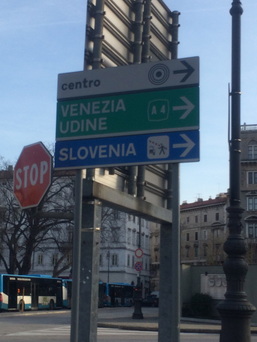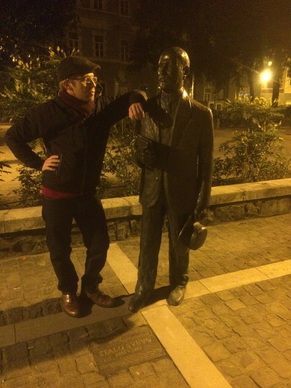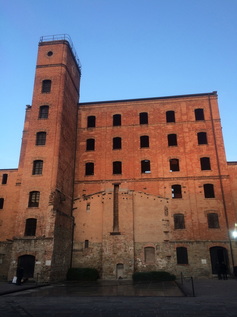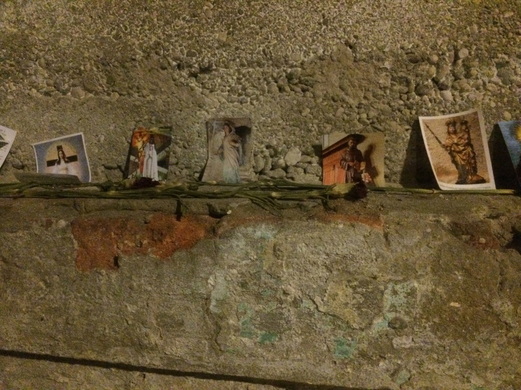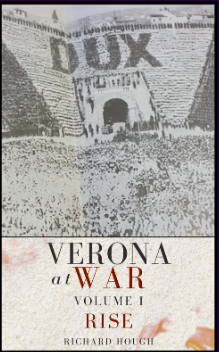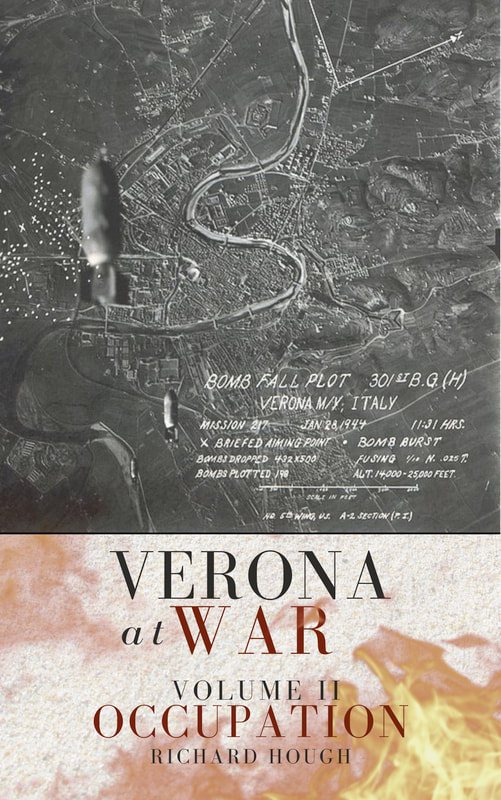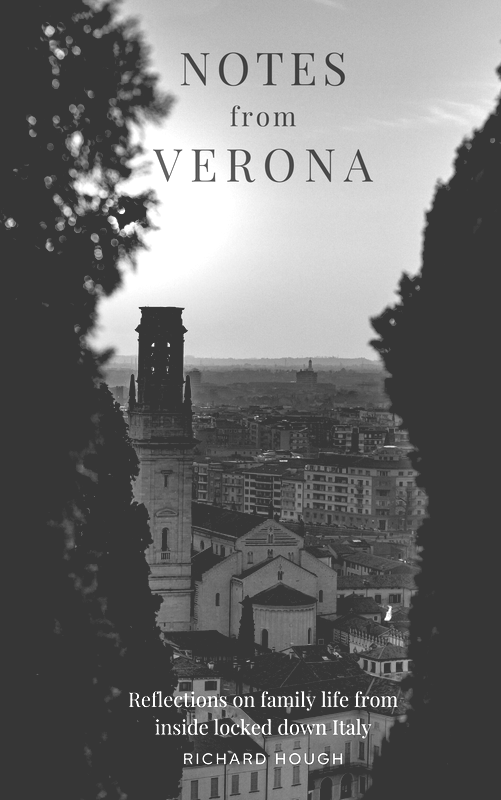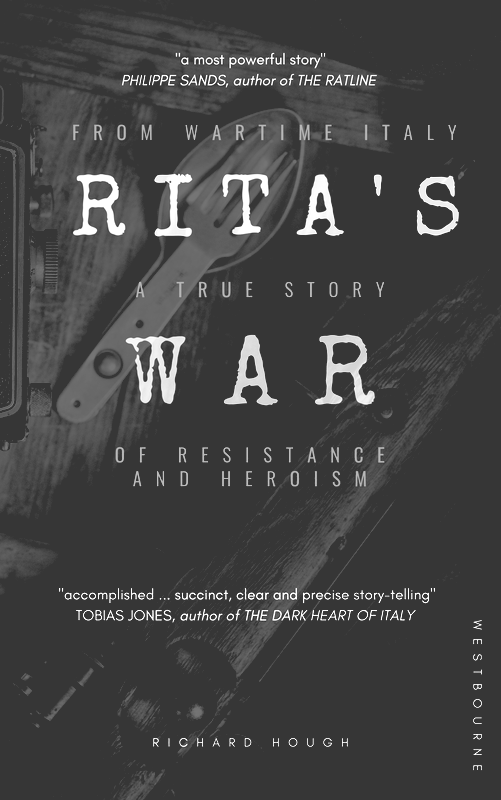|
I’m not entirely sure why, but "la bella Trieste" has long been on my wish list of places to visit. To the east of Venice, Trieste is enclosed on three sides by present-day Slovenia. At the foot of an imposing escarpment, the town proudly faces the Gulf of Trieste and, beyond that, the Adriatic. Trieste is familiar, but somehow unknown. It has an air of mystery and mystique the likes of which Rome, Venice and Florence, for all their ostentatious beauty, cannot compete. The Istrian peninsula, in which Trieste sits, is the meeting-place of 3 great European races – the Latino, the Teutonic and the Slav. For centuries, it has been an important port and trading centre. As a frontier town, it was an important battleground in the struggle between the East and West, before, during and after the Second World War. A literary city Culturally rich, it is the place where the archetypal Irish author James Joyce spent some of his most formative years. Italo Svevo, the pioneering Italian writer, was a contemporary and friend. While I know enough about the lives and works of these authors to be intrigued by their relationship with Trieste, I confess to never having read either. Perhaps a visit to the place they called home would inspire me to do so? Seeking employment as an English teacher, James Augustine Aloysius Joyce, a struggling Dublin-born writer in his early 20s, arrived in Trieste with his partner Nora Barnacle on the night of 20 October 1904. Abandoning Nora on a bench in the square opposite the train station, Joyce ventured off in search of lodgings. He did not return until the next morning. Not long after leaving Nora, he had met three drunken sailors who were having some difficulties with the local constabulary. Trying to intervene on their behalf, Joyce himself ended up in jail. The following morning, with the help of the British consul, he is eventually released to be reunited with his unfortunate wife. Notwithstanding this inauspicious welcome, the Trieste in which Joyce was to spend much of the next 15 years was a cosmopolitan port in which ethnic communities of Italians, Slavs, and Austrians coalesced alongside a wealthy Jewish intellectual and business class. Being a busy port full of sailors, Trieste had certain other attractions, in which Joyce is said to have fully indulged. Even today the nightlife of Trieste is lively, certainly compared to the more genteel offerings that Verona has to offer. Trieste's Jewish community Many of Joyce’s friends and students, including a local businessman named Aron Ettore Schmitz, were from the Triestian Jewish community. Schmitz, better known by the pseudonym Italo Svevo, wrote the ground-breaking Italian novel La Coscienza di Zeno (Zeno's Conscience). Were it not for the intervention of Joyce, who worked to have the novel published, this seminal work is unlikely to have seen the light of day. The existence of a Jewish community in Trieste can be traced back over 800 years. Despite a turbulent existence, by the 19th century Jews formed a sizeable and important part of the community of Trieste and occupied important positions in banking, commerce and insurance. In 1912 the grand synagogue on via San Francesco d'Assisi was opened. War In 1915, with many of his friends and students conscripted and Trieste facing an uncertain future, Joyce seeks refuge in Zurich. In 1919 he returns to a much-changed Trieste, but in 1920 he once again leaves, this time for Paris, where he remains for the next 20 years. The inter-war years are turbulent times for Trieste and, with the rise of fascism, the port town becomes a Gateway to Zion, an emergency exit for Jews fleeing Europe for Israel. The family of Rita Rosani (see A school called Rosani) are amongst those who pass through Trieste from central Europe. Unfortunately not all those seeking refuge in Trieste escape the fascist onslaught. The Risiera di San Sabba The Risiera di San Sabba was a former rice-husking facility that was built in 1898. From 8 September 1943, when Trieste, like the rest of Italy has fallen, under Nazi occupation, it is used as a prison camp, from where partisans, political and Jewish prisoners are detained and deported. On 4 April 1944 a crematory plant was installed at the Risiera. The plan was drawn up by Erwin Lambert, who had already designed a number of ovens for concentration camps in Poland. It was tested with the cremation of the bodies of seventy prisoners, shot the day before at a nearby shooting range. By April 1945, the tide of war had changed and the Germans in Italy were on the retreat. On the night of 29 April 1945 the building housing the crematorium and the chimney-stack were dynamited by the fleeing Germans to remove any evidence of their crimes. Human bones and ashes were found among the rubble in three paper sacks. A brutal looking club was also found amid the ashes. Now a museum, the club formed part of a commemorative display at the Risiera, until it was stolen in 1981 by neo-fascists. A replica of this brutal object, alongside the note left by the thieves, is now on display in the museum, an emotive reminder of the regions grim past. Trieste is a fascinating place to visit and I'm truly captivated by its remarkable story, not least the life and times of the illustrious author James Joyce who, during a particularly turbulent period in the city's history, called Trieste home.
Gathering dust on my bookshelf his magnus opus, Ulysses, remains unread. Perhaps one day. Update: For those, like me, who have been confounded by the density and complexity of Joyce’s seminal work, a comic adaptation of Ulysses is now available for the iPad generation: http://www.ulyssesseen.com/ |
AboutRichard Hough writes about history, football, wine, whisky, culture + travel and is currently working on a trilogy about wartime Verona.
|
